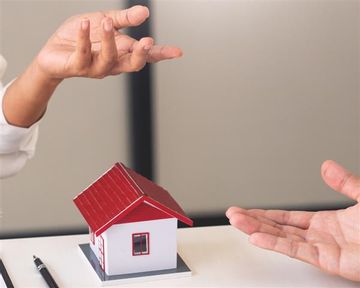Protecting your home from damp
The La Niña weather pattern that SA has been experiencing since December was not only responsible for the devastating floods in KZN but for higher rainfall than usual, all over SA in the past few months – and is why so many people across the country are currently struggling to combat damp in their homes.
“Many people think of damp as being a temporary excess of moisture in the air, like steam in the bathroom just after you’ve taken a hot shower,” says Gerhard Kotzé, MD of the RealNet estate agency group, “but in continuously wet weather or even afterward it can become a serious problem and even a health hazard that homeowners need to address as soon as possible.
“It can cause a musty smell to pervade your cupboards, all sorts of mould to grow, wood and leather to rot, metalwork to rust, paint, and plaster to flake from walls and tiles to lift in showers, bathrooms, and kitchens – in short, it can create really unpleasant living conditions, and also have a negative effect on the value of your property.”
There are two main causes of damp in the home, he notes, the first being a lack of adequate ventilation indoors and the second being what is known as “rising damp” from the ground outside. Damp and mould problems can also be caused by water leaks through the roof, from overflowing gutters or around an ill-fitting window or door frames, and, in a newly-built home, construction materials that are still drying out.
“The answer may be as simple as increasing ventilation by opening doors and windows as much as possible, installing extractor fans to get rid of condensation in a bathroom or kitchen, and eliminating any leaks.
“But if you live in an area of high humidity where the salt and sugar always tend to clump if you leave them out, or you are experiencing long spells of wet weather which make it difficult to air out your home, your best remedy is to use a relatively inexpensive device called a hygrometer to test how much moisture there is in the air - and if it is regularly above 70%, to invest in a good dehumidifier.”
On the other hand, you may have rising damp because the ground around your home is waterlogged due to inadequate drainage or too much rain. Rising damp occurs when water at ground level gets into the structure somehow and rises up through the walls, and the most common sign of it is bubbling paint or plaster at skirting-board level.
“This will generally not occur in modern homes as most will have a damp-proof course that is designed to prevent the ingress of water,” says Kotzé, “but in older homes, the damp-proofing may have been damaged over time, or there may be none at all, especially if the area used to be warmer and drier than it is now.
“And unfortunately, this is usually not a problem that you can address yourself. However, the sooner that you get it checked out by a professional the better, not only because early treatment will usually be cheaper, but because delays may lead to further problems including structural damage that will be much more costly and difficult to fix.”

